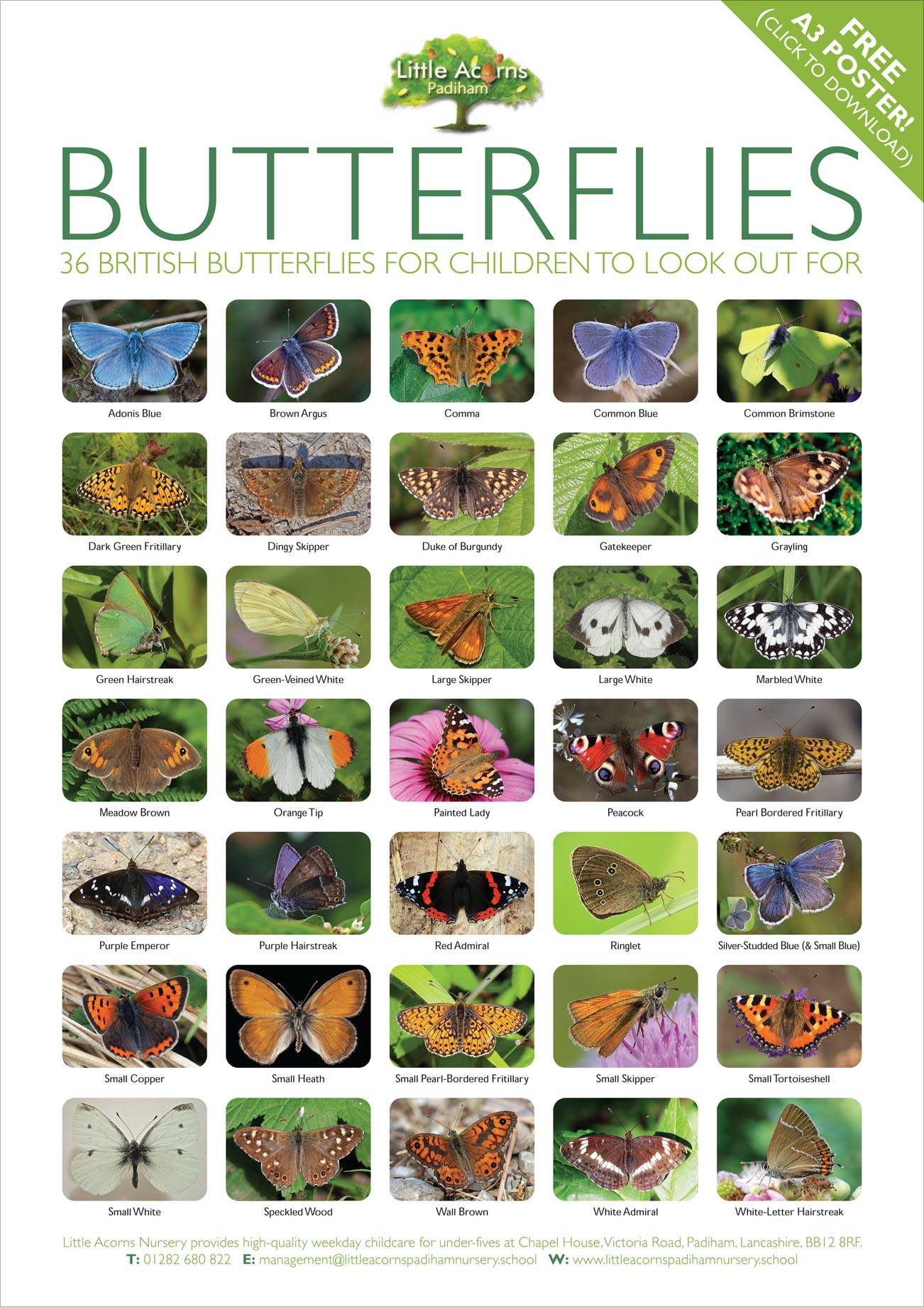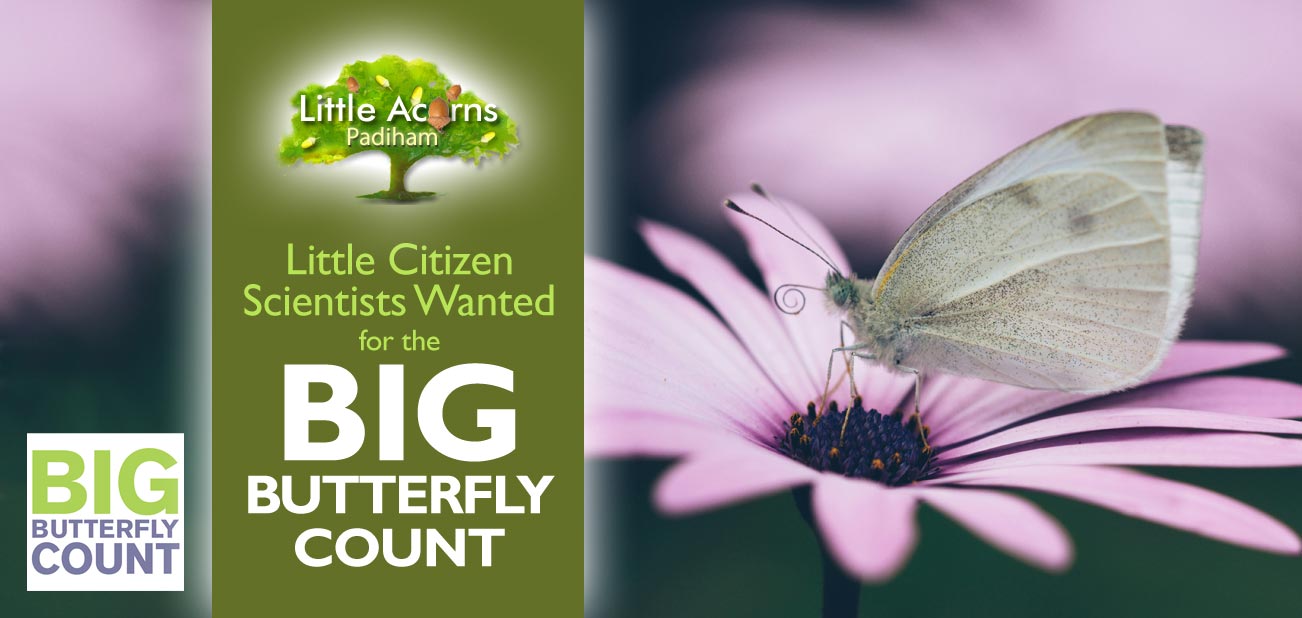
 Calling all little citizen scientists — we need your help — and parents too! During part of July and early August the Big Butterfly Count takes place across the UK and the more children and families that take part, the better. All it needs to take is 15 minutes and taking part will help butterflies, daytime-flying moths and the conservation of nature and biodiversity in general. What’s more, it’s a free, enjoyable, educational, and hugely worthwhile activity for children and families to take part in. In today’s post, we’ll tell you everything you need to know in order to take part in 2024’s Big Butterfly Count. Little citizen scientists: get ready!
Calling all little citizen scientists — we need your help — and parents too! During part of July and early August the Big Butterfly Count takes place across the UK and the more children and families that take part, the better. All it needs to take is 15 minutes and taking part will help butterflies, daytime-flying moths and the conservation of nature and biodiversity in general. What’s more, it’s a free, enjoyable, educational, and hugely worthwhile activity for children and families to take part in. In today’s post, we’ll tell you everything you need to know in order to take part in 2024’s Big Butterfly Count. Little citizen scientists: get ready!
The Big Butterfly Count 2024
Starts: Friday 12th July
Ends: Sunday 4th August
What is the Big Butterfly Count All About?
The Big Butterfly Count is the world’s largest survey of butterflies. It takes place in Britain each year during the period when adult butterflies and daytime-flying moths are at their most prolific and active. These wonderful creatures are sadly threatened, with UK populations of many having plummeted over the last few decades.
“Right now, butterflies and moths are sending an SOS” (Butterfly Conservation)
The giant ‘citizen’ survey therefore aims to keep tabs on populations of particular species each year so that any changes in their numbers can be identified and any adverse issues affecting them identified. Only then can appropriate conservation measures be implemented to help them recover.
In addition, because butterflies and daytime-flying moths suffer from the same threats as other pollinators and wildlife (climate change, use of indiscriminate pesticides, habitat loss, etc.), trends in their populations can be used as a barometer for the state of wildlife, biodiversity, and nature in general.
So, if you and your little one(s) would like to take part and become citizen scientists, read on and we’ll explain the easy process of taking part.
“One of the great things about the Big Butterfly Count is that anyone can play their part, whether young or old.”
What You’ll Need
 You’ll need a tiny bit of preparation, but it’s quick, free, and easy…
You’ll need a tiny bit of preparation, but it’s quick, free, and easy…
Either:
- Download and print out the free butterfly reference sheet — here’s the butterfly ID chart for England (alternative charts are available for other languages and UK areas);
or:
- For families with smartphones or tablets, download and use the Big Butterfly Count app — it’s free and also includes instructions and all the identification charts, links, and useful information you or your child will need to complete the task.
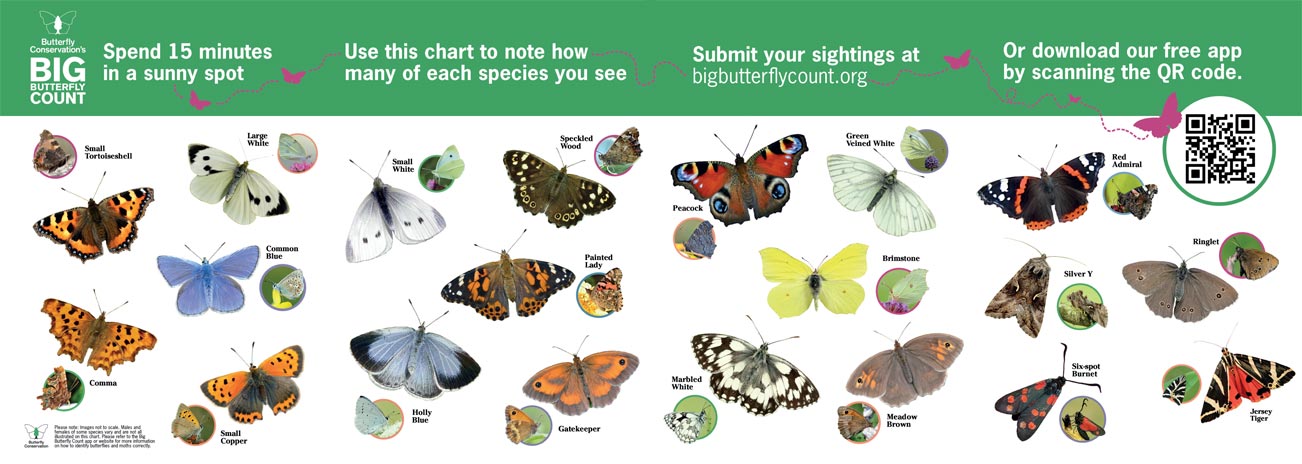
Choose a Location for your Butterfly Count
Before commencing your own butterfly count, you’ll need to identify a suitable location in which to do so. That could be your garden, local park, somewhere in the countryside, or simply somewhere like a hedgerow. Wherever it is, it will need to have flowers in bloom in order to attract butterflies and/or daytime-flying moths. And, of course, it needs to be safe, with any little ones having suitable adult supervision.
The Best Places to Spot Butterflies
You/your little one will want the best chance of spotting butterflies during the Big Butterfly Count. With that in mind, the following types of locations are likely to have the greatest potential for success:
- Places where there are lots of flowers, blooms, or wildflowers;
- A sunny location that’s also sheltered from the wind;
- Flower meadows and anywhere with brambles;
- Clearings in forests where wildflowers are growing;
- Areas with long grass if they contain wildflowers;
- Hedgerows that contain wildflowers;
- Glades or forest clearings where a wide variety of trees and plants can be found at different developmental stages;
- The middle of the day is often a great time to see butterflies.
How to Do Your Butterfly Count
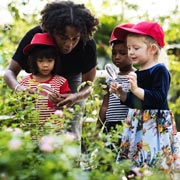 Once you’ve chosen a suitable location that has flowers blooming and is ideally sunny and sheltered, you are ready to count butterflies and submit them to the Big Butterfly Count survey.
Once you’ve chosen a suitable location that has flowers blooming and is ideally sunny and sheltered, you are ready to count butterflies and submit them to the Big Butterfly Count survey.
Over the course of 15 minutes, count the butterflies (and daytime-flying moths) that are included on the ID chart or smartphone app (only about 21 of the possible 60+ species are targeted in the Big Butterfly Count*). You/your child can log your sightings either directly in the app or by marking them on your butterfly ID printout. Don’t worry if you don’t see any at all within the 15-minute window — that counts in the survey too.
* If you/your child would like to identify and log butterfly and moth species not included in the Big Butterfly Count, you can do so using an alternative smartphone app, iRecord Butterflies, which you can use any time of year.
You can either stay in one spot or walk while counting during your 15-minute slot. You can do as many 15-minute surveys as you like within the survey dates. Each can be submitted as a separate survey, along with the date and location for each.Tips!
See the Results!
Once you and your child have counted and submitted your results, you are officially Citizen Scientists! Well done! We hope it was fun and interesting as well as being a good thing to do to help the adorable butterflies, moths, and conservation of the natural world itself.
If you’re wondering what the results of the thousands of citizen scientist surveys across the UK are, you can check these out on this interactive map or the equivalent map available through the Big Butterfly Count smartphone app. You will have to wait until the results are available, i.e. for 2024 this will be from the 5th of August. Once available, you’ll be able to see counts and details of what was spotted in all areas of the UK. Try zooming in on your own area, which will include your own survey(s) within the data presented.
Other Ways Children Can Help Butterflies
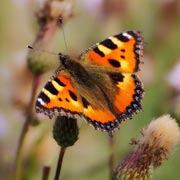 In addition to taking part in the Big Butterfly Count, children and families can help butterflies in other simple ways too. What’s more, they’re also fun, educational, and make the world a better place. Additional ways to help butterflies – and other pollinators – include:
In addition to taking part in the Big Butterfly Count, children and families can help butterflies in other simple ways too. What’s more, they’re also fun, educational, and make the world a better place. Additional ways to help butterflies – and other pollinators – include:
- Sowing wildflowers in gardens and outdoor spaces;
- Making gardens and outdoor spaces more wildlife-friendly;
- Putting out pieces of overripe fruit (apples, oranges, bananas) and shallow dishes of water for them to sip at;
- Refraining from using harmful chemicals in gardens (e.g. pesticides, weedkillers, slug and snail killer, etc.);
- Keeping gardens ‘natural’ — e.g. avoiding replacing lawns with fake grass, mowing too often, or paving over areas that can be kept natural.
Nature & Little Acorns Nursery, Padiham
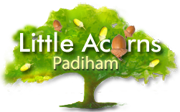 Little Acorns Nursery in Padiham is perfectly located for children’s involvement in the Big Butterfly Count and for being close to nature. That’s important, because nature is incredibly beneficial to children — and adults, of course. Nearby are parks, hills, waterways and the gorgeous Lancashire countryside. And, at our Padiham nursery itself, we have a lovely garden with a wild zone for children to explore. These areas allow children to get close to nature in a safe, supervised, environment. They also support the nursery’s tailored curriculum including any specific areas of interest for children under our care.
Little Acorns Nursery in Padiham is perfectly located for children’s involvement in the Big Butterfly Count and for being close to nature. That’s important, because nature is incredibly beneficial to children — and adults, of course. Nearby are parks, hills, waterways and the gorgeous Lancashire countryside. And, at our Padiham nursery itself, we have a lovely garden with a wild zone for children to explore. These areas allow children to get close to nature in a safe, supervised, environment. They also support the nursery’s tailored curriculum including any specific areas of interest for children under our care.
Consider a nursery place for your child at Little Acorns Nursery in Padiham today. Here, they will get the very best start in a nurturing, homely environment where we will bring out the very best in them. Choose an option to get started:
Our location in Padiham, Lancashire, means that our nursery is also near Hapton, Rose Grove, Burnley, Altham, Huncoat, Read, Simonstone, Sabden, Higham and Wood End.
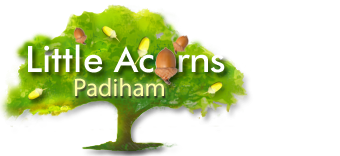
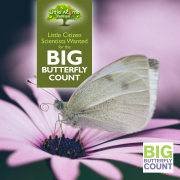


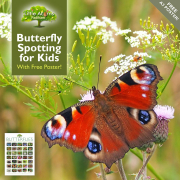
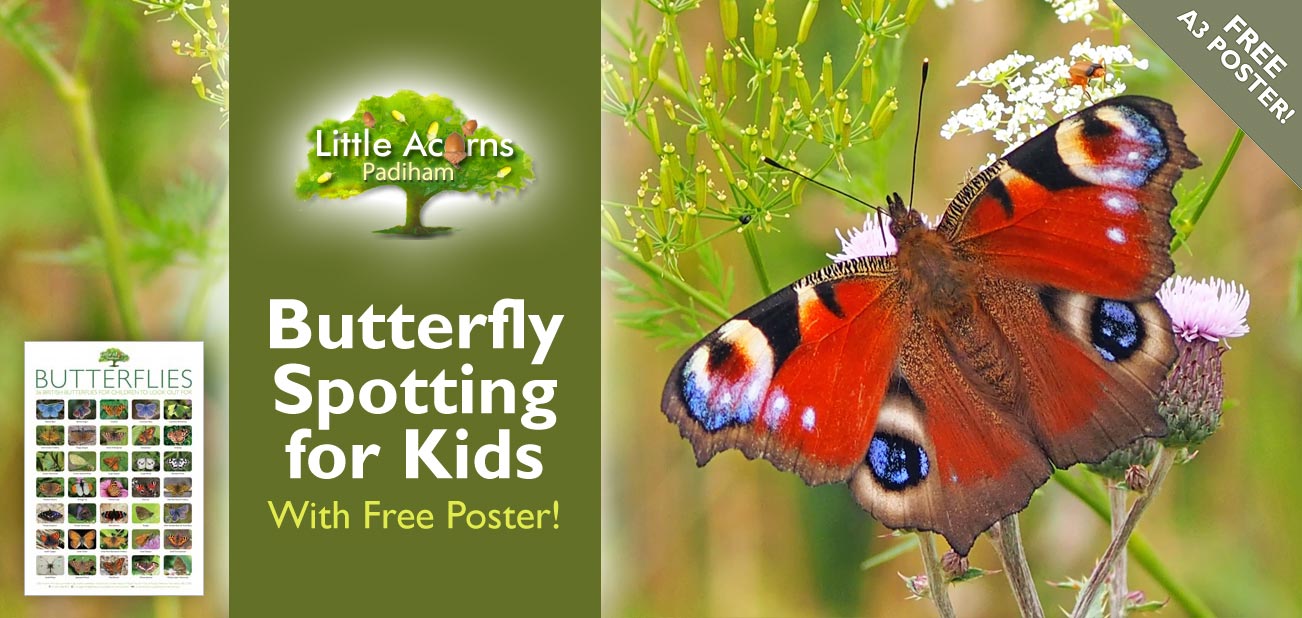
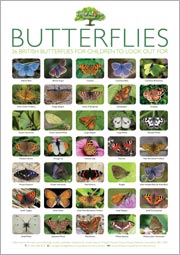 At the time of writing, it’s peak butterfly-spotting time — more adult butterflies can be seen in late July and early August than at any other time in the year. That makes it the perfect time for children to get out in nature to spot these charming creatures. Doing so is fun, educational and also beneficial in so many ways – we’ll explain more about that later.
At the time of writing, it’s peak butterfly-spotting time — more adult butterflies can be seen in late July and early August than at any other time in the year. That makes it the perfect time for children to get out in nature to spot these charming creatures. Doing so is fun, educational and also beneficial in so many ways – we’ll explain more about that later.